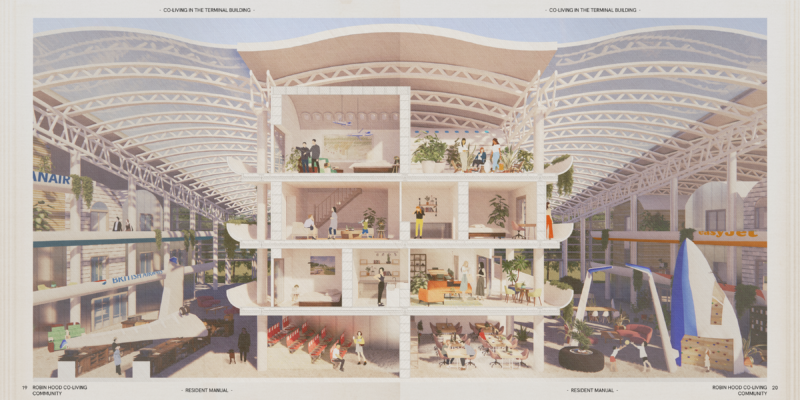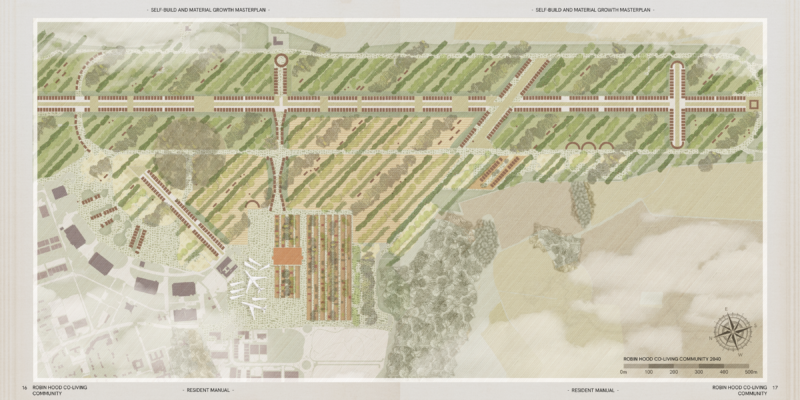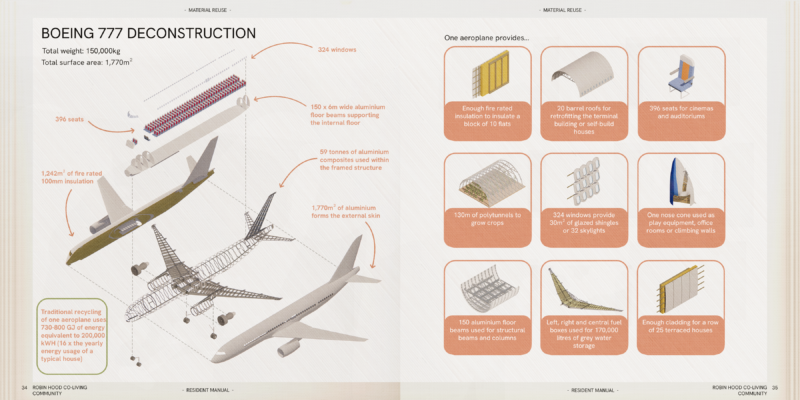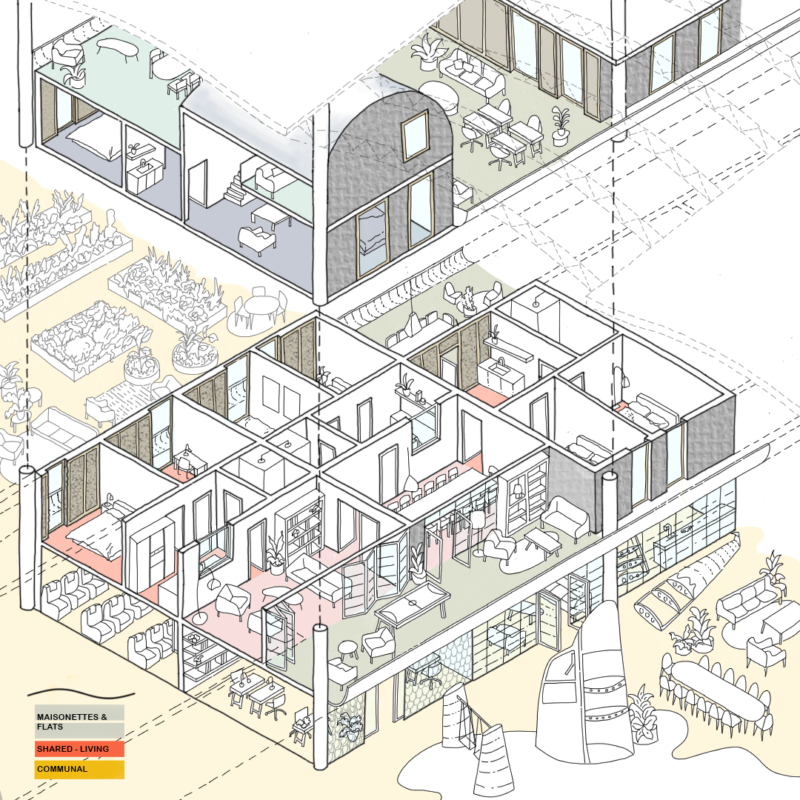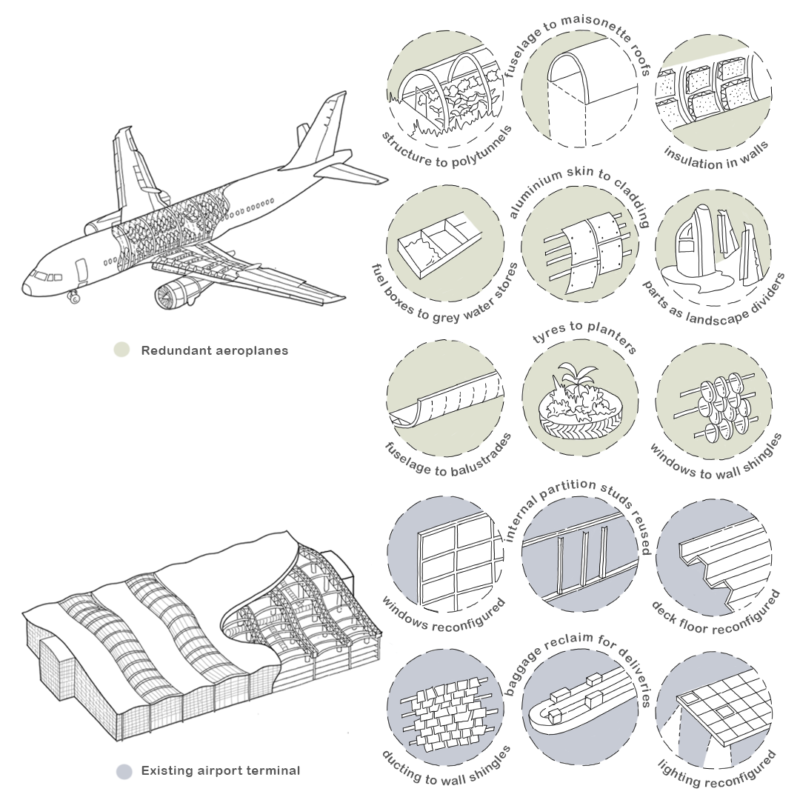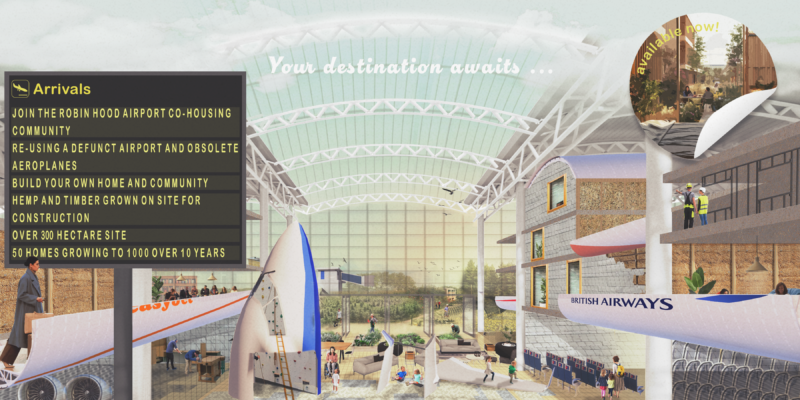
Robin Hood Co-Living Community
Alma-nac, Constant SD, Eric Guibert, Mark Blackwell
We are architects, academics, gardeners, structural and aerospace engineers. We present the Robin Hood Co-living Community. It is a bold and ambitious proposal but one that addresses a real and ever present issue that will only increase: what do we do with redundant airports and planes?
Airports tend to be well connected to urban hubs, have significant local populations and with large (very large!) amounts of land. They also have significant building stock which, with a bit of imagination, can be repurposed to provide housing or facilitate housing. Aeroplanes are highly engineered, very expensive to recycle into new planes and each year over 700 are being decommissioned (source: IATA).
We’ve selected Robin Hood Airport (AKA Doncaster Sheffield Airport) which closed in 2022 as our case study to show how the airport terminal can be reimagined as a co-living space and seed a larger self-build community across its grounds.
The modular nature of the terminal (6m x 6m grid) allows the floors to be reconfigured and roof panels to be replaced with glazing or left open as required. The ground floor becomes a space of work, play, growing and experimentation for the wider community. The first floor is given over to areas for communal living and the upper floors provide more traditional self-build homes.
Aeroplanes contain high grade insulation in panels; fuselages which can be reused as bridges, barrel roofs and polytunnels; and composite skins and windows which can be shingles to provide rain screens.
The ambition is to re-wild large parts of the grounds but also provide area to grow building materials and launch a large scale self-build community utilising redundant aeroplanes as well as materials grown on site.
Alma-nac
Rachel Foreman, Project Lead
Chris Bryant, Director
Constant SD
Brian Constant, Structural Engineer
University of Westminster/UCL
Dr. Eric Guidbert, Gardener/Architect
SkyDrive
Dr. Mark Blackwell, Aerospace Engineer
